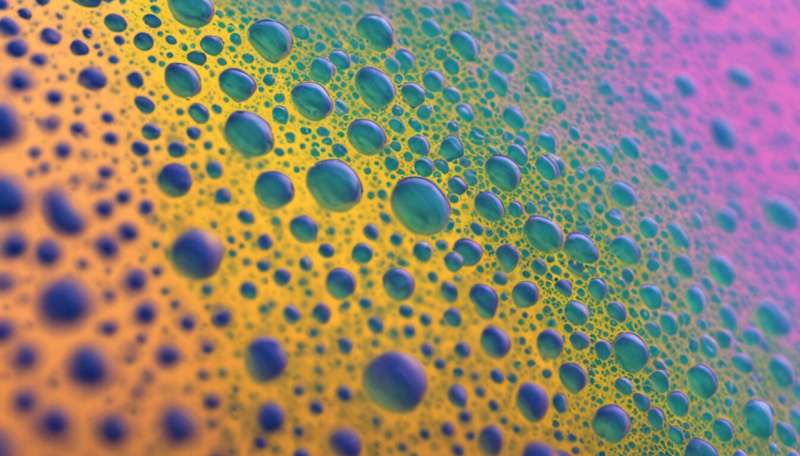Antibacterial, antifouling polymer coatings could soon relegate catheter-associated infections in the blood to history

(Phys.org)—Catheters play a crucial role in hospital care, particularly in the transport of intravenous fluids and medication. Typically, they are made of flexible low-toxicity silicon rubber that is, unfortunately, prone to colonization by bacteria or other microbes. Once settled, the microbes form a biofilm that provides resistance to antimicrobial agents and the body's immune response. These biofilms are the leading cause of potentially lethal healthcare-related infections. To prevent this build-up, or fouling, a team led by Yi-Yan Yang from the A*STAR Institute of Bioengineering and Nanotechnology (IBN) has developed a simple and effective method to modify the rubber surface of catheter tubing.
Existing approaches against microbial adhesion use antibiotics or silver to coat the catheter surface. However, overuse of antibiotics can lead to bacterial resistance and the silver coating can be toxic to blood, limiting the clinical implementation of these methods. "Moreover, the 'burst release' of these antibiotics and silver affects their efficacy," says Yang.
Yang and her co-workers therefore adopted an alternative approach: they altered the silicon rubber using antimicrobial and antifouling copolymers consisting of a polyethylene glycol (PEG) polymer linked to a strand of polycarbonate polymer. The polycarbonate strand was composed of positively charged hydrophilic and hydrophobic units, or monomers. Adopting a cleverly low-effort strategy, the team modified the rubber surface with a reactive substance known as dopamine, and then simply dipped the pre-coated surface in a solution containing the polymer precursors to anchor the copolymer chains.
The researchers determined the antibacterial and antifouling performance of the coatings by incubating the multidrug-resistant Staphylococcus aureus Gram-positive bacteria with the treated rubber. All coatings exhibited antifouling properties thanks to their flexible and bulky PEG portions, which prevented microbial cells from approaching the rubber surface. Furthermore, only coatings that contained hydrophobic monomers in the positively charged polycarbonate killed bacteria in solution. This highlights the importance of these monomers, which may insert into bacterial membranes and thereby enhance the interaction between polymer and bacteria.
Noting that very few red blood cells ruptured upon contact with the coatings, Yang says that there was no blood protein adsorption or platelet adhesion on the treated surface—proof of the excellent blood compatibility of the polymers.
Yang and her team recently optimized the polymer compositions to also fight Gram-negative bacteria. "We plan to expand these technologies to other coating applications, such as to contact lenses and to implant coatings, to prevent biofilm formation," she adds.
More information: Ding, X., et al. Antibacterial and antifouling catheter coatings using surface grafted PEG-b-cationic polycarbonate diblock copolymers. Biomaterials 33, 6593–6603 (2012). www.sciencedirect.com/science/ … ii/S0142961212006370
Journal information: Biomaterials

















